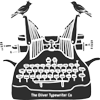The history of medicine is a splendidly bizarre and shocking source for the historical crime writer to draw upon. From Rose Tremain’s fabulous Restoration, to the dazzling complexity of Iain Pears An Instance of the Fingerpost, medicine and medical matters have provided a rich gothic pallet for the historical and crime novelist’s art.
For me, medical history offers too much that is unusual, macabre and extraordinary to be left between the pages of history books. For my novel, BELOVED POISON, the dark and exciting history of early nineteenth century medicine offered an evocative, alarming and inspiring world. Individuals provide us with a way in: John Hunter, anatomist extraordinaire, amassed one of the largest collections of anatomical specimens in the whole country – along the way testing the idea that gonorrhoea and syphilis had the same origins by smearing infected pus onto his own penis. Hunter was unofficially in cahoots with the resurrectionists, taking bodies in at the back door of his home-cum-anatomy-school, while his wife opened the front door to society ladies. Once dissected – organs sliced and pickled in formaldehyde, arteries and veins injected with coloured resin to preserve their filigree pathways – Hunter boiled up the bodies in a great copper cauldron til their bones were clean – as good a place as any to hide a murdered corpse, surely? Others, such as toxicologist Robert Christison, tried numerous poisons on themselves, with an emetic standing by so they could induce vomiting once the symptoms had been noted. A thrilling, risky approach to medical and scientific discovery, it is also one in which murder might be concealed as accidental overdose.
Along with Hunter and Christison, men such as Joseph Lister (pioneer of antiseptic surgery) William MacEwen (the man who put doctors into white coats), Robert Knox (disgraced by the Burke and Hare scandal) and Joseph Bell (the doctor Sherlock Holmes is based upon) all had reputations or notoriety that I drew upon to flesh out the characters in my novels. What would it take for the ambition and jealousy of such individuals to spill over into murder? How might those who have been schooled in the art of life and death abuse their power? How difficult might it be to uncover the truth once such men had taken a life rather than preserved it?
Aside from those at the top of the profession, history gives us a unique view of the people at the bottom: the patients. Riddled with diseases for which there was no cure, or with minds and bodies ravaged by syphilis – both the pox and the clap (incurable before the twentieth century) offer us limitless potential for madness, horror and death – the patients, of whatever class, were at the mercy of those who purported to treat them.
Consider too what we might call the ‘ancillary services’: resurrectionists have been the stuff of fiction since … well, since Burke and Hare. How many innocent citizens ended up on the anatomists’ tables via foul means? The tools of the grave robber would be familiar to most medical students prior to the Anatomy Act of 1832.
And what of the atmosphere of the historical crime novel? Public health and sanitary reform might be words of the dullest hue, yet to any writer worth their salt they conjure up an atmosphere that, quite literally, reeks of death. The stink from decaying matter, the great quantities of human and animal waste that gathered in pits and pools, in mounds and middens – so many opportunities to kill, to asphyxiate, to drown, to bury alive in a mountain of stinking refuse. Falling (or being pushed) into any body of water in the city – the Fleet Ditch, the Thames, the Westbourne to name but three – would almost certainly result in death. Drinking water drawn from a street pump could signal a painful and undignified end for hundreds if the cholera was in town. Such a fate might be an occupational hazard for those living in the metropolis, but it might also be an opportunity for murder that might easily go undetected. The history of medicine is a giant topic of limitless potential to the historical crime fiction writer. How lucky we are to have such material to inspire us.
